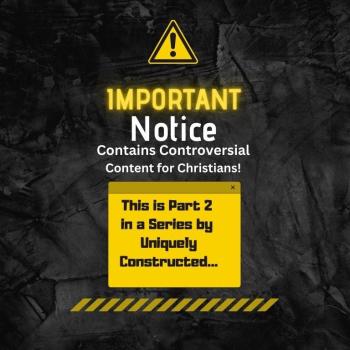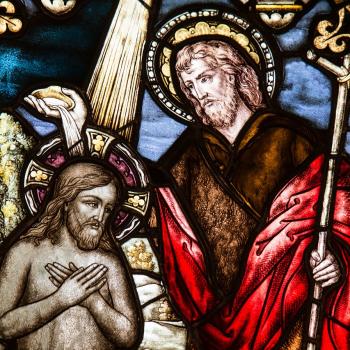Since this blog site is named “in Christ,” I think it is prudent to discuss what being “in Christ” means. It is participation in Christ, which is also known as union with Christ. When people trust in Jesus as Messiah and Lord of their life, and trust that he died for their sins and rose again, they receive the Spirit of God and Christ. Christ now lives in them through the Spirit, and they in him. They are now “in Christ” and members of the metaphorical and spiritual body of Christ (1 Corinthian 12:13; Romans 8:9-11). They also die and rise again with Christ, spiritually speaking:
Dying and Rising with Christ

Paul claims regarding his own relationship with Christ that he is crucified with Christ, and yet he lives by a trust relationship with the Son of God who loved him and gave himself for him on the cross (Galatians 2:19–20; cf. 1:4). The apostle also affirms that baptism enacts our being buried with Christ in the waters of baptism and then rising again to new life. This is an act in which we are to die to our old sinful and self-serving nature, and live in a new, righteous, and holy way before God (Romans 6:3–11). Such is the new life in Christ.
In 2 Corinthians 5:17 Paul affirms that there is a new creation for those who are in Christ. In Romans 8:1 he claims there is no condemnation for those who are in Christ Jesus. Condemnation is for those who live after their sinful nature instead of walking in step with God’s Spirit.
The coming of Christ into the world has to do with God invading the cosmos and delivering humans from enslavement from the power of the sinful evil age. As Susan Eastman affirms, all human existence is participatory: “whether ‘in Christ’ or under the power of sin and death, human life always is constrained and constructed in relationship to external forces that also operate internally” (Susan Eastman, “Participation in Christ,” in The Oxford Handbook of Pauline Studies, ed. Matthew V. Novenson & R. Barry Matlock; Oxford: Oxford University Press, 2022: 441–544, here 443–44). If so, there is no neutral territory—humans either are subject to the power of Sin or God in Christ. May we chose the latter and learn by faith to die to our sinful nature and live a new life for Christ!
Conclusion
I can think of no better way to end this brief lesson than to quote Susan Eastman:
“Paul’s approach to humanity’s imprisonment under sin, rather, is thoroughly Christocentric. Humanity is delivered from its subjection and entanglement by a divine act: God’s participation, through Christ, in the realm of sin and death, in an intimate rescue operation from within.
As a result, human personhood is newly constituted in relationship with Christ and all who belong to Christ (‘the body of Christ’), even as it is severed from a constitutive relationship with the power of sin and death (‘the body of sin’).
Therefore, participation in Christ is union with a competing and ultimately victorious Lord, who is greater than sin and death (1 Cor 15:24–28), whose self-generated identification with enmeshed humanity grasps it in a gracious relationship (Phil 3:12), and whose presence and power is mediated through the in-dwelling Spirit (Rom 8:9, 11). This participation is both embodied and corporate, experienced through the relational matrix of the body of Christ—that is, in relationship with believers who as such are members of Christ” (Eastman, “Participation in Christ,” 451).
For more on participation in Christ, see my other post by clicking here.

















